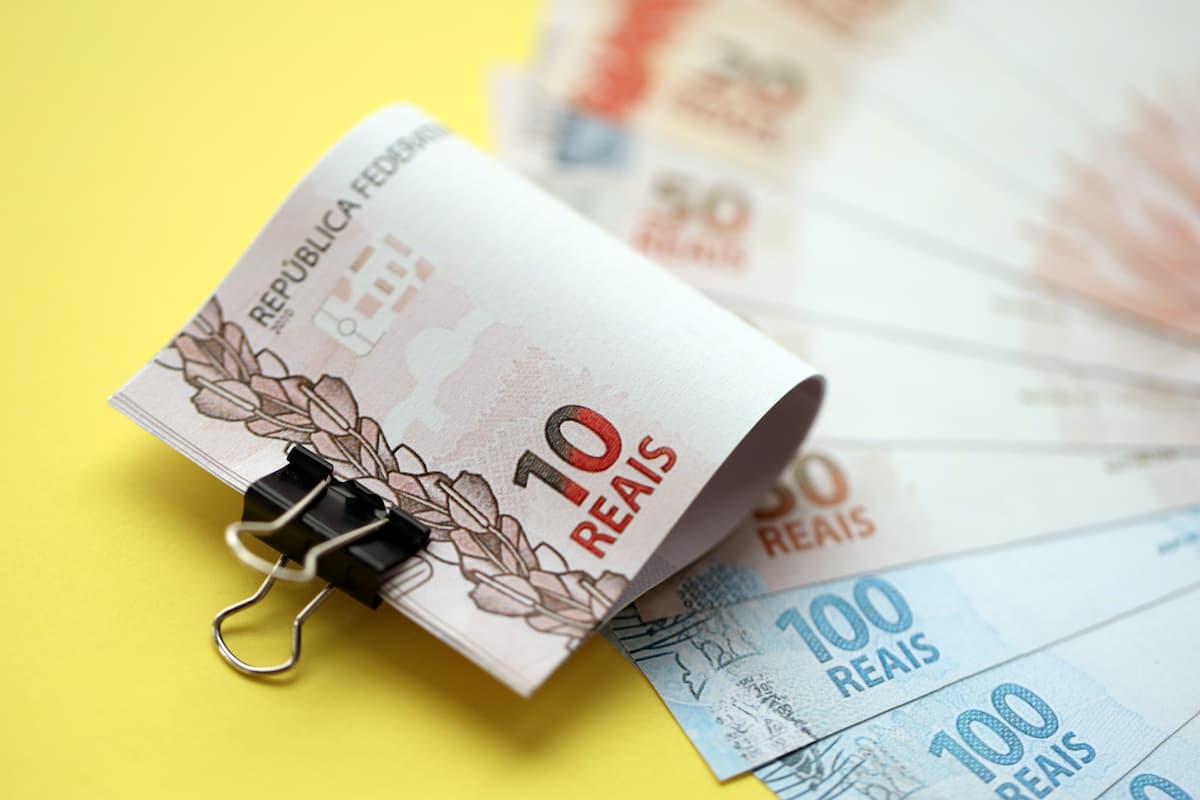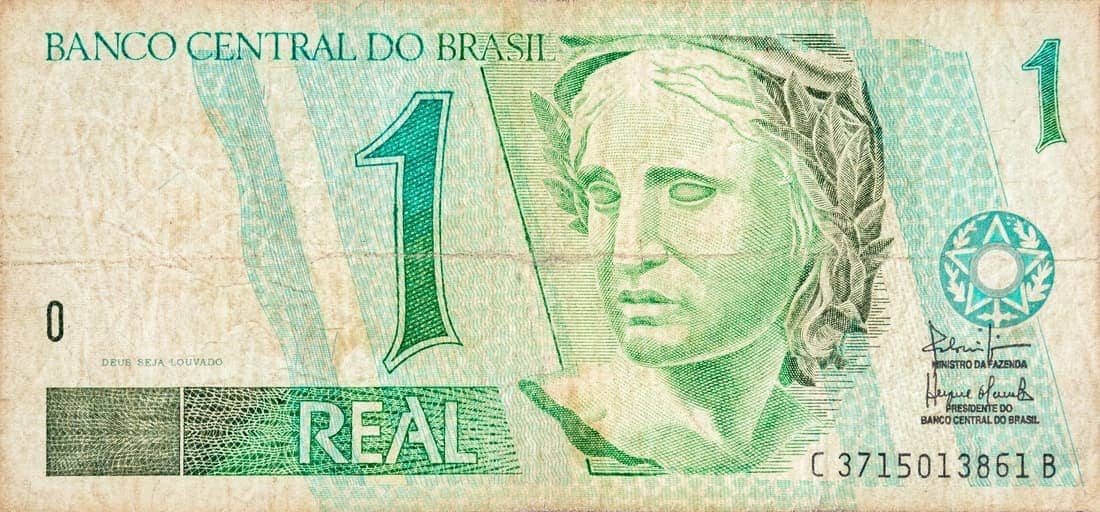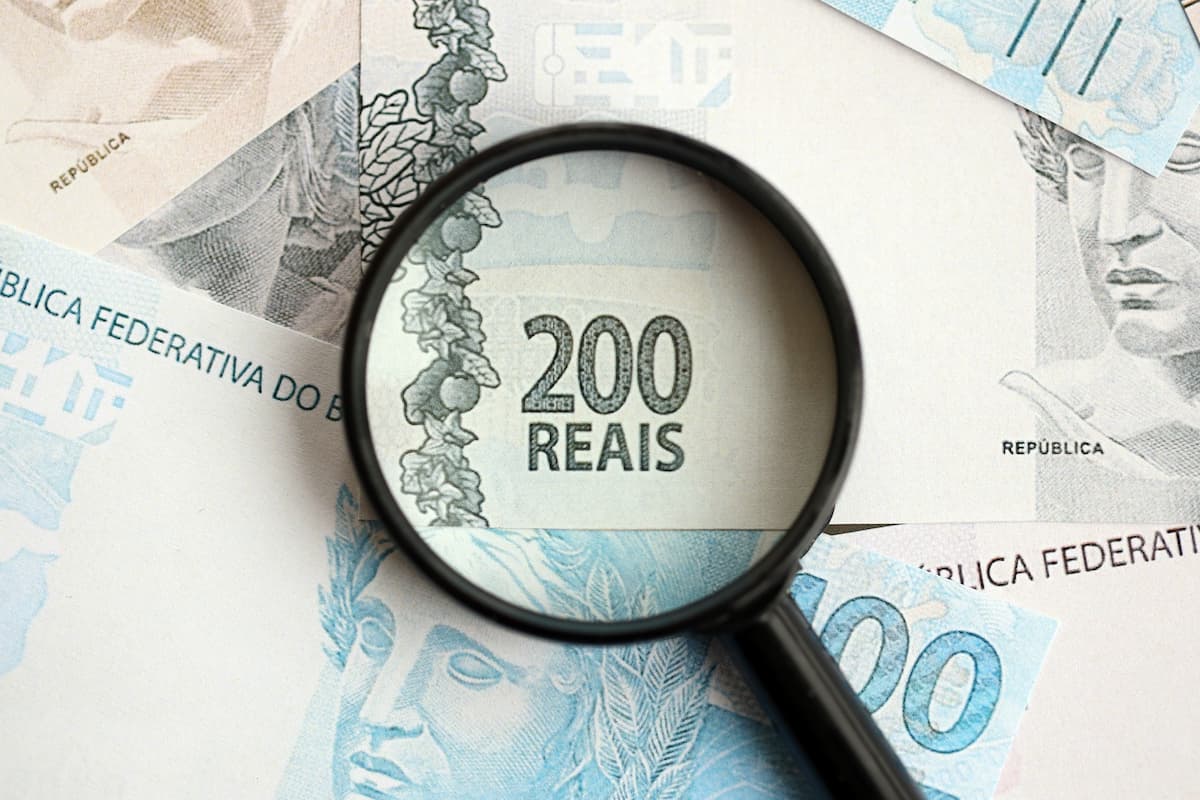Brazilian Currency: A Guide to the Brazilian Real
As the largest country in South America, Brazil is consistently in the spotlight. Whether it’s for its dynamic political situation or its rich culture and breathtaking landscapes, people always want to know what’s happening in Brazil. Naturally, this curiosity extends to its currency, the Brazilian real, which is the focus of many investors and travelers.
Whether you’re planning a trip to Rio, exploring investment opportunities, or simply curious about how money works in the region, we break down all you need to know about the Brazilian currency, from its fascinating history and colorful banknotes to current exchange trends, payment options, and practical money tips, consider this your go-to resource for navigating Brazilian money with confidence.
Brazil’s Currency Explained: Brazilian Real 101

The official currency of Brazil is the Brazilian real (plural reais), coded as BRL and denoted by the symbol R$. Each real is divided into 100 centavos. Brazilian coins include 1 real and centavos of 5, 10, 25, and 50, while banknotes in circulation are R$2, R$5, R$10, R$20, R$50, and R$100. (A R$1 note was once issued but has been replaced by a coin – it remains legal tender even though it’s no longer printed.)
All Brazilian currency is issued by the Banco Central do Brasil (Brazil’s central bank) and printed by the Casa da Moeda do Brasil (the national mint). The modern real was launched on July 1, 1994, as part of the Plano Real economic plan, replacing the previous Cruzeiro Real at a fixed rate (1 real = 2,750 Cruzeiros Reais). Today, the Brazilian real floats freely, with its value influenced by the country's economy, interest rates, and commodity prices.
In late 2024, for example, 1 USD traded for about R$6.00 (meaning the real has weakened since the 1994 dollar peg). As of mid-2025, Brazil’s annual inflation rate was around 5% – above the central bank’s 3% target – reflecting persistent inflationary trends that keep interest rates high. (The central bank raised its policy rate to about 15% in 2025 to tame inflation.)
A Brief History of Brazil's Currency
Brazil’s currency history reflects its battle with inflation and economic reform.
The country originally used the real during colonial times, but by the 20th century, hyperinflation was so severe that new currencies were introduced every few years. It had transitioned through several currencies – including the cruzeiro, cruzado, and cruzeiro real – each introduced in an attempt to combat runaway inflation. During the 1980s and early 1990s, it eroded public confidence, with prices sometimes doubling in just months.
To restore stability, the government introduced the Plano Real in 1994, creating today’s Brazilian real (BRL). Initially pegged to the U.S. dollar at a 1:1 exchange rate, it successfully curbed inflation and rebuilt trust in the financial system. Over time, the real shifted to a free-floating currency, and while it has faced periods of devaluation and inflationary pressure, it remains a central symbol of Brazil’s economic resilience and reform.
Brazilian Real Banknotes and Coins: Denominations & Designs

Brazil’s currency uses colorful banknotes and coins featuring Brazil’s national symbols and wildlife. Notably, each banknote has a different dominant color and an animal on the back to help with identification. For example:
-
1 real: No longer printed as a note, replaced by a bimetallic 1 real coin (introduced 1994). (Old 1-real notes are still valid.)
-
2 reais (blue): Features an A Hawksbill sea turtle swimming among coral. The phrase “Hawksbill sea turtle” appears on the 2-real note.
-
5 reais (purple): Shows a Great egret (a white heron) on the back.
-
10 reais (red-orange): Depicts a Green-winged macaw (arara) on the reverse.
-
20 reais (yellow): Features a Golden lion tamarin (mico-leão-dourado), an endangered monkey species native to Brazil.
-
50 reais (orange): Shows a Jaguar (Panthera onca), the largest cat in the Americas.
-
100 reais (blue-green): Depicts a Dusky (brown) grouper fish.
-
A 200-real banknote (gray) was introduced in 2020 with a maned wolf design, but 50-real or 100-real notes remain the highest common denominations.)
Each note also has the national personification (Efígie da República) on the front. All notes have security features (e.g., watermarks, holograms) and vary in size by denomination to help with recognition. The Banco Central do Brasil oversees the currency design, and all real banknotes are printed by the Casa da Moeda do Brasil, a mint that also produces Brazil’s coins and commemorative issues.
For collectors, some special Real notes exist, but we get into this in more detail below. For example, commemorative 10-real notes were issued for sporting events. Coins and even some older obsolete notes (from the Cruzado or Cruzeiro eras) are collectible, though for most people, the Brazilian real is simply daily money.
Ready to sell?
Are you ready to sell your currency? Stop waiting and request a Shipping Kit. We will provide everything you need to ship and receive funds for currencies you own.
Inflationary Trends & Currency Power
Brazil’s Real has seen ups and downs. After its strong start (pegged to the dollar in 1994) and brief surge in 1995, it has generally weakened versus the USD over the decades. In recent years, 1 USD has often cost around R$5–6. Investors watch Brazil’s macroeconomic factors closely: inflationary pressures, fiscal policy, and interest rates. As noted, inflation has been around 5% in 2024–25, which is higher than desirable.
The central bank’s aggressive rate hikes (to ~15%) have aimed to bring inflation down toward the 3% target. Due to its emerging-market status, the Brazilian real can be volatile. However, it remains one of the more widely traded currencies; in fact, as of 2019, the real was the 20th most traded currency in the world. Its value influences how far your dollars go in Brazil: a weaker real means cheaper travel costs, while a stronger real means more expensive Brazil for foreigners.
Brazilian Real to USD Exchange Rate
Always check the current exchange rate before traveling for up-to-date rates. At the time of writing, the official rate is:
1 USD=5.4395 BRL
Last updated August 19th, 2025 03:08:03
For travelers budgeting in USD, remember the math: at roughly R$5.5 per dollar, each R$100 is about. Understanding this will help you gauge prices when shopping or paying bills in Brazil.
Using Brazilian Money: Payment Methods and Systems

Today, cash is still king in Brazil and used for many smaller local purchases, but digital and electronic payments are becoming widespread. When in Brazil, you will encounter several payment methods:
Brazilian Cash
Real banknotes and coins are accepted everywhere, especially outside big cities. Small merchants, taxis, markets, and street vendors often prefer cash and might not even accept cashless payment methods. However, large notes can be inconvenient: if you only have R$50 or R$100 bills, many shops or taxi drivers may not have change. It’s always recommended to carry smaller denominations just in case.
For example, if you have 50-real or 100-real notes, it’s smart to break them into smaller bills as soon as you land – at the airport exchange desk, with baggage handlers, or even at a café when you buy your first coffee, so you always have small change handy upon arrival.
Bank Cards (Credit/Debit)
Using credit/debit cards is generally safe and convenient in Brazil’s urban areas. Visa and Mastercard are widely accepted; Discover and American Express – less so. Always check for a foreign transaction fee from your card issuer. Most shops, restaurants, and hotels have an electronic payment terminal (card reader). At checkout, you’ll usually be asked “débito ou crédito?” (“debit or credit?”) to select the transaction type.
However, keep in mind that many small vendors (street food, markets, local taxis) may accept only cash. Some even have “DÉBITO” stickers on their door to indicate they take cards. If using a card, expect that terminals may offer a choice of “débito” or “crédito” (debit vs credit); selecting debit usually means entering your PIN.
Just notify your bank that you’re traveling to Brazil to avoid fraud blocks, and keep in mind that these payment methods may come with higher fees depending on your card issuer or bank.
PIX (Instant Payment)
Brazil’s most revolutionary payment system is Pix, launched by the Banco Central do Brasil. PIX is an instant payment network (available 24/7) that lets users transfer money or pay for purchases by scanning a QR code or sending to an email/phone-linked key. Merchants often display a QR code on the payment terminal for customers to scan with their banking app.
PIX transactions are usually free and immediate, and the preferred payment method for locals. However, PIX is linked to Brazilian bank accounts, so foreign visitors may not be able to register for PIX unless they have a Brazilian bank account.
Digital Wallets
Mobile apps like Mercado Pago, PicPay, and others are increasingly popular. These apps often integrate with Pix (or have their own QR-based payments) for quick checkouts. For instance, MercadoPago (part of MercadoLibre) allows both Brazilians and tourists to pay or receive payments via QR codes and instant transfers.
These payment systems provide user-friendly, cashless options, especially among younger Brazilians. Tourists can often use these apps when allowed (but always have a local payment or cash backup).
Checks (Cheques)
Personal checks are largely outdated, especially for travelers. Brazilians do still use checks in some business contexts (e.g., paying in installments), but only Brazilian checks are accepted in Brazil. Foreign checks or traveler’s checks are generally not accepted, so tourists should avoid relying on checks.
Overall, modern Brazil is moving toward digital payments. That said, always carry some cash for small vendors, tips, or in case a digital system is down or not available.
Exchanging Money in Brazil: Banks, ATMs & Fees
Brazilian authorities regulate currency exchange. If you bring USD/EUR into Brazil, you must report amounts exceeding US$10,000 or equivalent to the Banco Central. You can then exchange currency at authorized places. Most major airports have multiple exchange counters (though usually at poor rates). When exchanging, always compare rates and fees. The Banco Central warns that some outlets have high commissions.
Avoid shady “street hawkers” offering better rates and stick to licensed offices to obtain Brazilian reais (câmbio) through safe channels. Foreign exchange counters (casas de câmbio) and banks are the preferred places to exchange USD or EUR for reais. Also, try to avoid exchanging money at hotels or airport kiosks if possible, as they often give unfavorable rates.
Instead, look for an authorized bureau de câmbio: the Banco Central do Brasil even offers a free “Câmbio Legal” app to find licensed exchangers nearby.
ATMs
ATMs are plentiful in urban Brazilian areas and typically dispense R$50 or R$100 notes. You can withdraw reais from international ATMs at major banks (Itaú, Banco do Brasil, Bradesco, Santander, etc.). Supermarkets, gas stations, and malls also have 24-hour ATMs (often part of the “Banco24Horas” network). It’s safest to use ATMs inside bank branches to reduce fraud risk.
However, be aware that Brazilian ATMs typically charge a fee (around R$24 per withdrawal at Banco24Horas), on top of any fee your own bank may charge. When you withdraw, both your home bank and the ATM-owning bank will deduct fees, so minimize withdrawals if possible and buy Brazilian reais beforehand at better rates.
Paying in Cash
When paying, always pay in reals. Local stores will rarely accept dollars or euros at face value; if they do, they often give a poor conversion rate or even commit scams. Exchange your USD or other currency before visiting the Terra da Santa Cruz (aka the Land of the Holy Cross, as it was initially called), and spend reais when there.
Tips for Tourists: Cash Handling and Tipping
For travelers visiting Brazil, here are some practical money tips:
-
Carry Small Change: In markets, buses, street food stalls, and small shops, you often need coins or small bills. Vendors may not carry much change for large notes. Keep a supply of R$1/R$2 coins and R$5/R$10 bills.
-
Tipping Culture: Tipping (known as “gorjeta”) is customary but modest in Brazil. Many restaurants automatically add a 10% service charge (lei da gorjeta). If it isn’t added, a tip of about 10% of the bill is normal local etiquette. Note: Portuguese “propina” means bribe, so use “gorjeta” for tip. At quick-service places or cafés, leaving a couple of reais as a tip or rounding up is appreciated but not mandatory. For taxis, tipping is not expected, and most drivers will round down the fare, but it is certainly appreciated.
-
Common fees: Keep in mind that some services (like public restrooms) may charge a small fee (often 50 centavos) at gas stations or malls.
-
Emergency USD: Carrying a little USD or EUR as backup can be helpful in extreme situations. But remember, almost nobody will give local currency in exchange outside official channels. It’s better to order your Brazilian real beforehand to receive your funds before you arrive, or if you must, exchange at banks/cambios or use ATMs.
Tips for Collectors and Numismatists
Collectors might be interested in Brazil’s rich currency history. The current Real series (since 1994) has several interesting aspects:
-
Commemorative issues: On special occasions, Brazil has issued collector coins (e.g., for the 2016 Olympics) and occasional special banknotes (e.g., the 10-real World Cup note of 2010, or the newer 200-real coin).
-
Casa da Moeda do Brasil: As the mint, it sometimes releases limited collector editions. For instance, the 2020 launch of the R$200 bill (featuring the maned wolf) was a notable new issue.
-
Obsolete currency: Earlier Brazilian currencies (Cruzeiro, Cruzado, etc.) have collectible value. Even old Cruzeiro notes printed 1:1 with “mil-reais” from the Empire era can intrigue collectors.
While general tourists need only know the current Brazilian Real, anyone curious about numismatics will find Brazil’s currency iconography and security features interesting. (The Casa da Moeda runs a museum and museum shop in Rio where collectors can see historical coins and banknotes.)
Buy Brazilian Real Online
This guide should prepare you for handling Brazilian currency smoothly. Understanding the local payment systems, exchange practices, and norms will make spending money in Brazil (and enjoying it) much easier.
US First Exchange enables you to exchange exotic currencies from all over the world at the most competitive rates on the market – online, and with a few simple clicks. When you exchange Brazilian currency with us, you will receive high-grade banknotes delivered straight to your doorstep safely and securely, within 24–48 hours.
Safe travels (boa viagem) and enjoy using reais on your visit!
Don't wait, create your order today!
You can buy and sell over 20 different currencies at the most competitive rates on the market with US First Exchange.
Ready to buy?
Are you ready to buy your currency? Stop waiting and request a Shipping Kit. We will provide everything you need to ship and receive funds for currencies you own.


